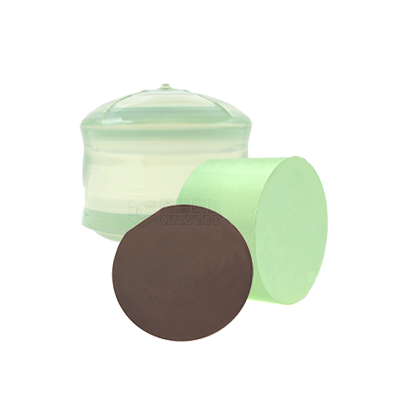In the realm of advanced materials, Lithium Tantalate (LiTaO3) has emerged as a crucial component driving innovation across several high-tech industries. Its unique properties make it a cornerstone in telecommunications, microelectronics, and photonics, paving the way for significant advancements and shaping the future of technology.

Telecommunications: Enhancing Signal Processing and Frequency Control
Lithium Tantalate's contribution to telecommunications extends beyond basic signal processing to ensuring the efficiency and reliability of wireless networks. Its high electromechanical coupling coefficient enables the creation of highly sensitive SAW devices that efficiently convert between electrical and acoustic signals. This capability is crucial for the development of RF filters, which are essential for managing spectrum usage and ensuring clear signal transmission across various wireless communication standards.
Moreover, LiTaO3's stability and low insertion loss make it ideal for applications in frequency control devices such as oscillators and resonators. These components are pivotal in maintaining precise frequency stability in telecommunications infrastructure, ensuring uninterrupted and reliable communication across long distances.
The integration of Lithium Tantalate in telecommunications not only enhances current network capabilities but also supports the ongoing transition to 5G and beyond, where demands for higher bandwidth, lower latency, and increased network capacity necessitate advanced signal processing technologies.
Microelectronics: Empowering Miniaturization and Sensor Technology
In the realm of microelectronics, Lithium Tantalate plays a crucial role in driving miniaturization trends and enhancing the performance of electronic devices. Its piezoelectric properties enable the fabrication of compact and efficient MEMS devices, which are integral to the development of sensors and actuators with high sensitivity and responsiveness.
LiTaO3-based MEMS sensors find applications in diverse fields such as automotive, healthcare, and environmental monitoring, where precise measurement of physical parameters is critical. These sensors offer advantages such as low power consumption, high reliability, and compatibility with integrated circuitry, thereby enabling the creation of smart, interconnected devices for the Internet of Things (IoT) ecosystem.
Furthermore, in integrated circuit design, Lithium Tantalate facilitates the development of high-frequency SAW devices and acoustic waveguides that enable faster data processing and signal filtering capabilities. This capability is essential for improving the performance of computing systems and enhancing data throughput in high-speed communication networks.
Photonics: Enabling Advanced Optical Devices and Systems
Photonics represents another frontier where Lithium Tantalate's unique properties shine. Its high optical transparency and nonlinear optical characteristics make it an ideal material for the development of advanced optical devices, including modulators, switches, and frequency doublers.
LiTaO3-based optical modulators are crucial for manipulating light signals in fiber-optic communication systems, enabling high-speed data transmission and efficient bandwidth utilization. These modulators leverage LiTaO3's electro-optic effect to achieve rapid modulation rates and low insertion losses, which are essential for maintaining signal integrity over long-distance optical networks.
Moreover, in the emerging field of photonic integrated circuits (PICs), Lithium Tantalate plays a pivotal role in enabling the integration of optical components on a single chip. This integration enhances system compactness, reduces power consumption, and improves reliability, making PICs well-suited for applications in telecommunications, data centers, and optical sensing technologies.
Future Prospects and Technological Advancements
Looking ahead, the versatility and performance capabilities of Lithium Tantalate (LiTaO3) position it as a cornerstone material for future technological advancements. As research and development efforts continue to expand, LiTaO3 holds promise for applications beyond traditional domains, including quantum information processing, where its nonlinear optical properties could facilitate the development of next-generation quantum communication networks and computing systems.
In conclusion, Lithium Tantalate's impact across telecommunications, microelectronics, and photonics underscores its role as a transformative material in modern technology. By enabling enhanced signal processing, miniaturization, and optical integration, LiTaO3 continues to drive innovation and shape the future landscape of high-tech industries. As industries embrace the potential of LiTaO3, ongoing advancements are poised to unlock new possibilities and push the boundaries of what is achievable in communication, computing, and beyond.
For more insights into the evolving applications of Lithium Tantalate and its role in shaping future technologies, stay tuned for further developments in this dynamic field.

